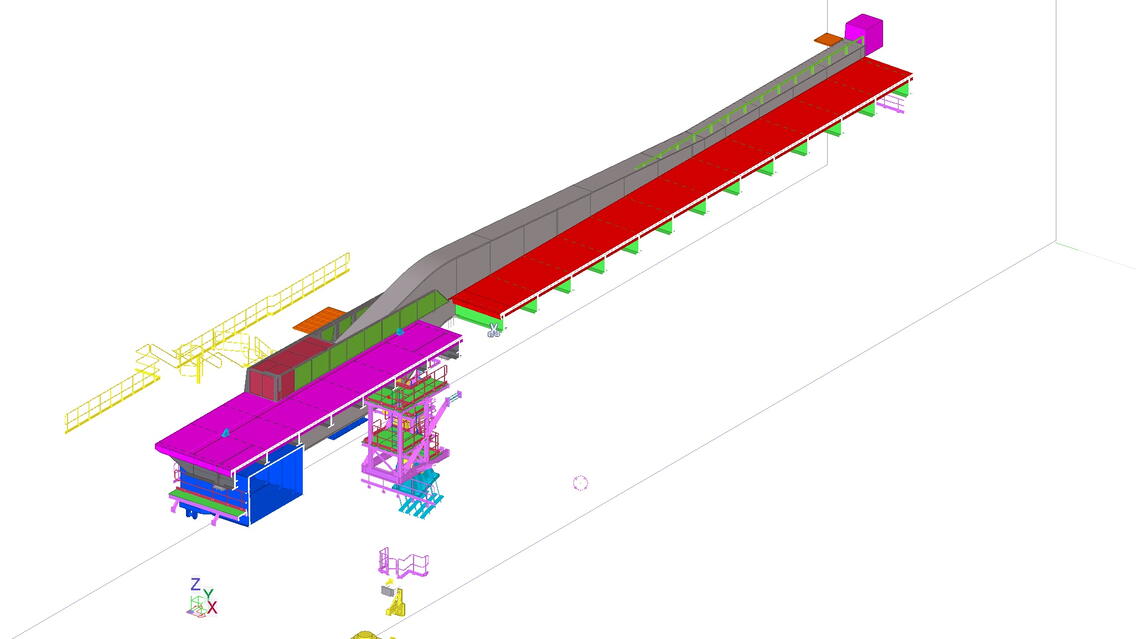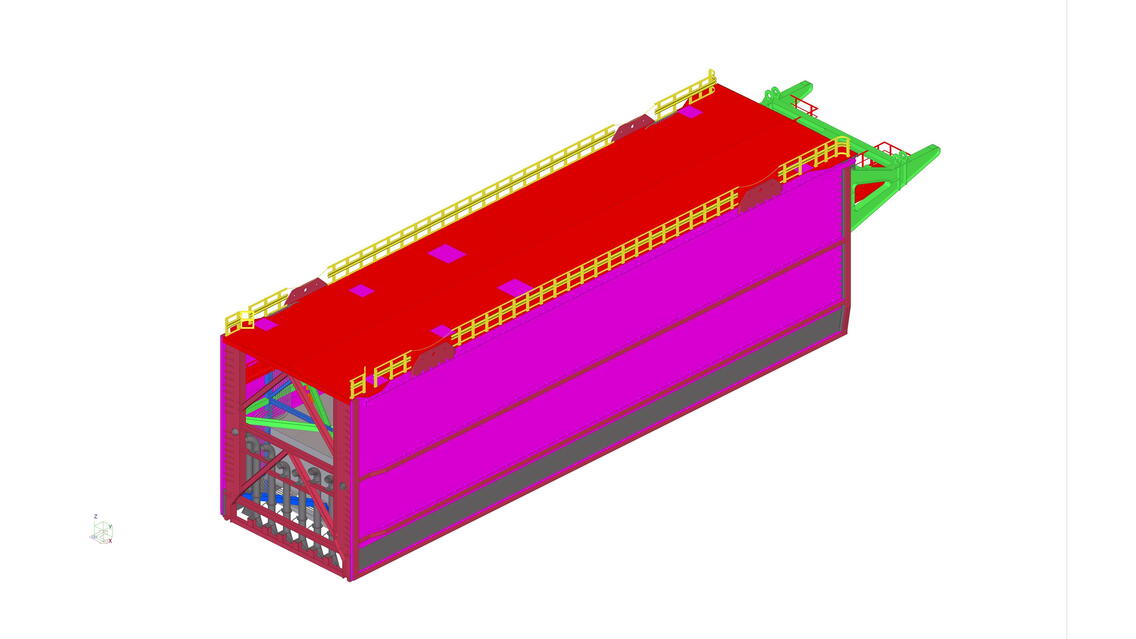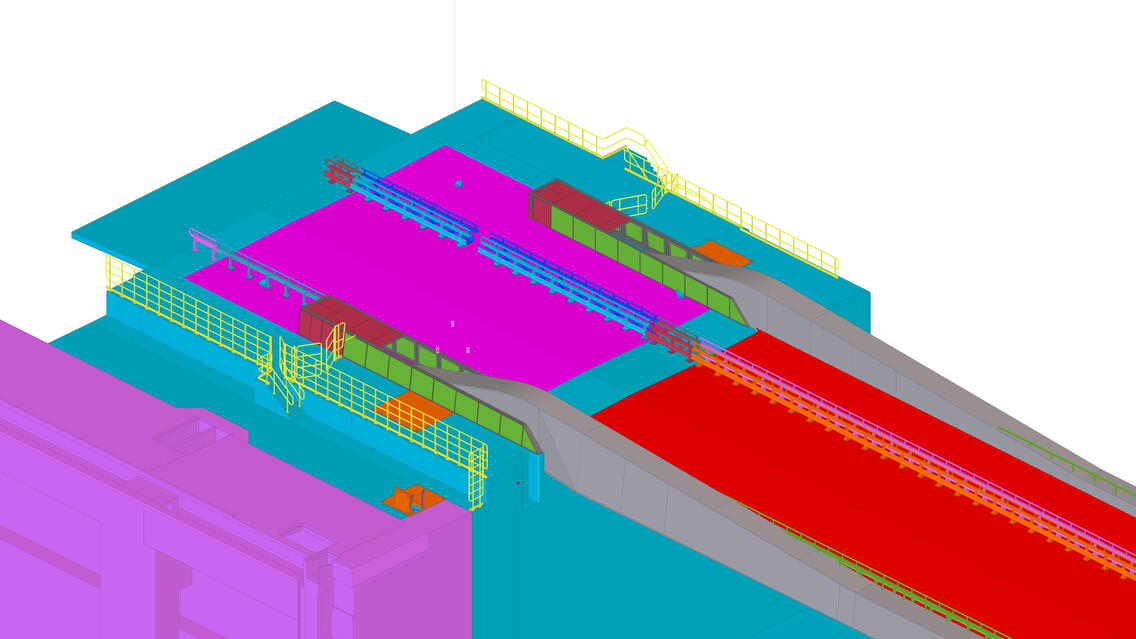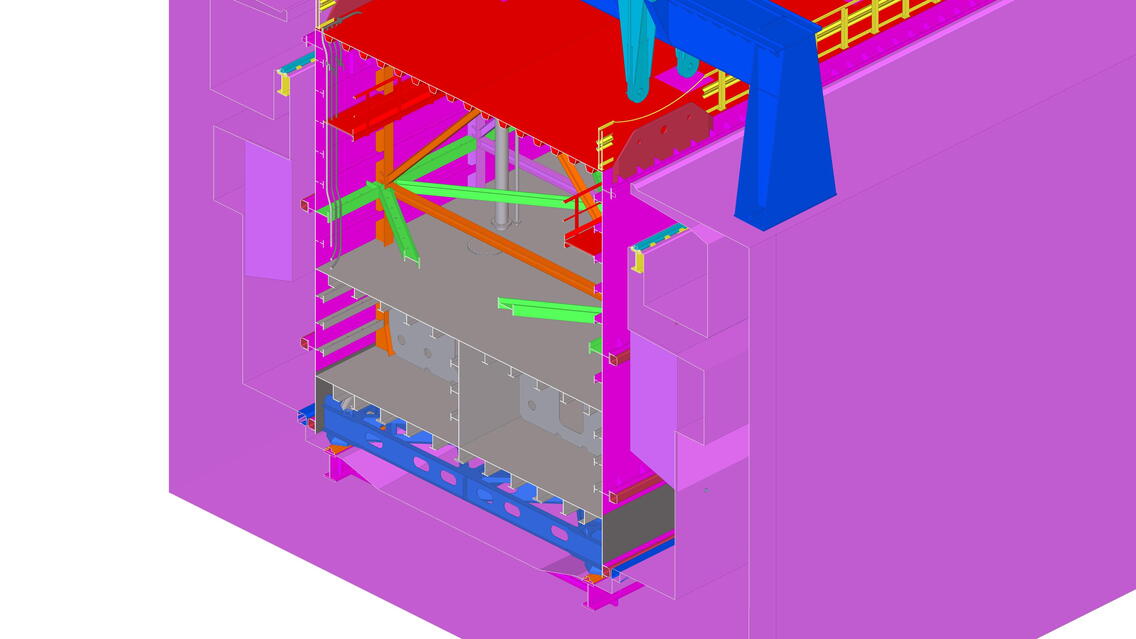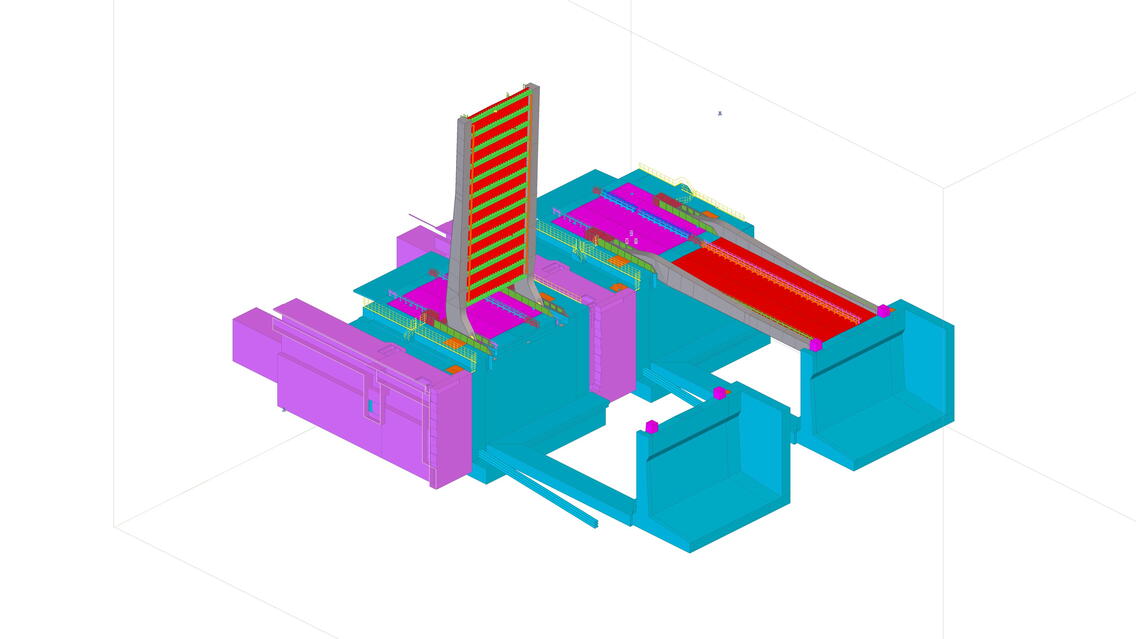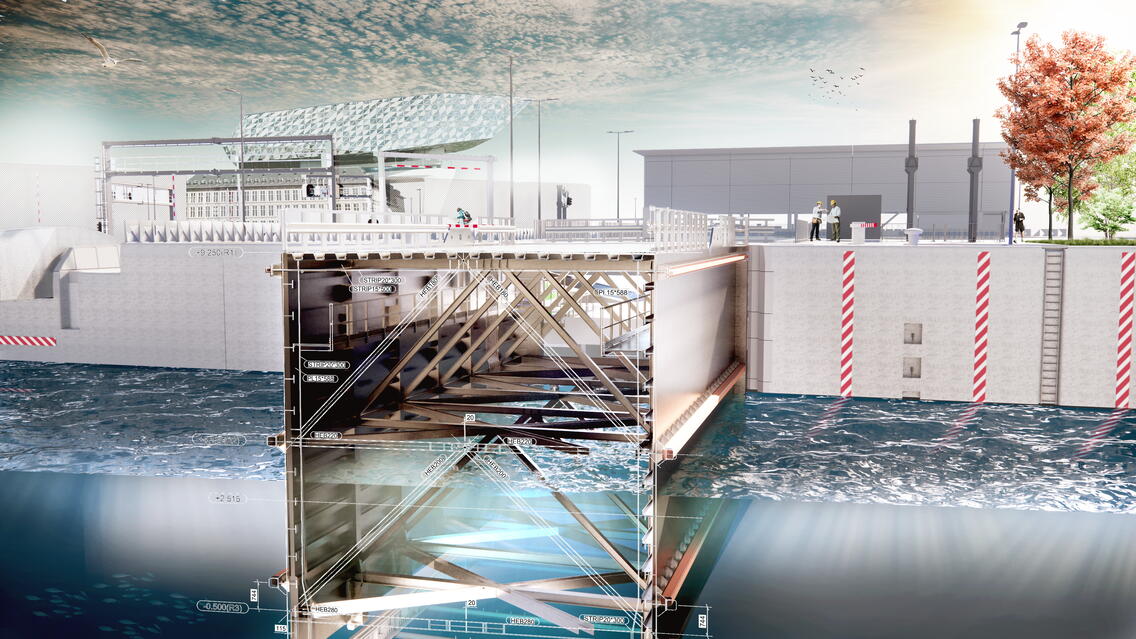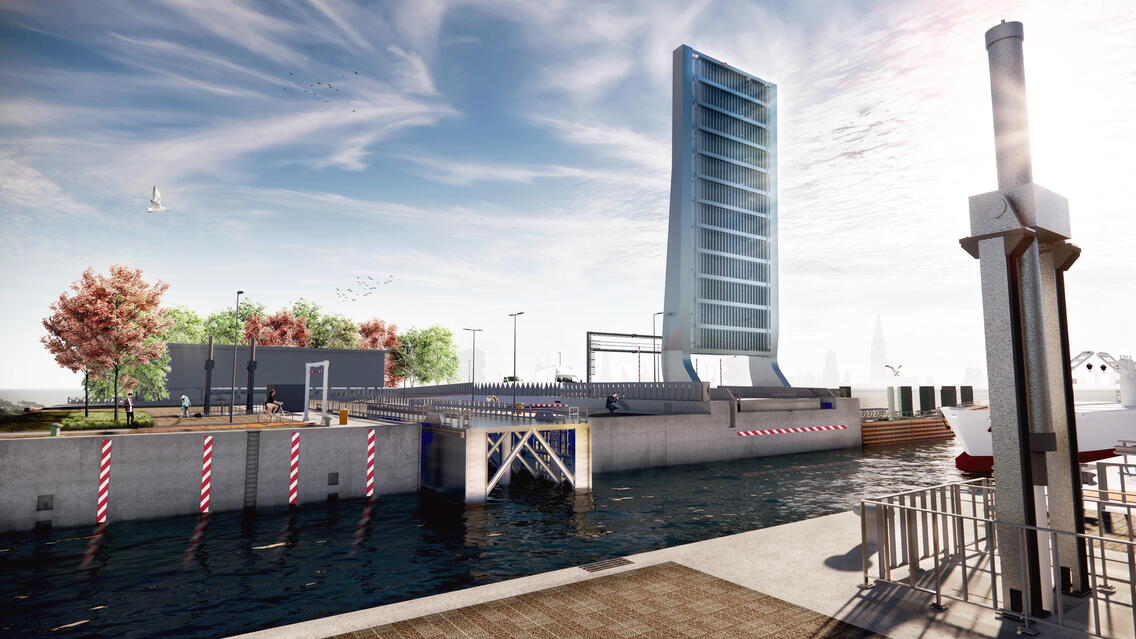Royers lock provides access from the river Scheldt to the Albert Canal
In the port of Antwerp (Belgium), the Royers lock provides access from the river Scheldt to the Albert Canal.
Built in the years 1900-1910, the lock is at the end of its lifespan. On the basis of an SCBA, it was decided to demolish the existing lock and build a new, larger lock (250 meters long and 36 meters wide). SBE assisted in this study as a consulting expert.
The design is based on the Kieldrecht lock and consists of 2 single roller gates. Bascule bridges on either side smoothly guide road traffic over the lock. Both the rolling gates and bridges were modelled entirely in Tekla up to production level.
The construction pit will be excavated into the embankment, with special attention paid to the conserved lockkeeper’s house in the middle of this embankment. In addition, two machine buildings will be built, one central technical building and four kiosks for the operation of the bypass sewers. As the lock will be extended in the direction of the Scheldt, the access channel will also have to be redesigned, including new navigation guiding, adapted embankment protection and dyke works.
Thanks to the expertise of the different teams within SBE, this assignment could be tackled in an integrated way. We were responsible for the entire design up to and including the tender phase, for both the lock and the hydraulic study of the temporary and definitive environmental construction. The electromechanical equipment was also designed, with a preference for winches that set the gets in motion using hydraulic cylinders in the bridge cellars.
For the project, a fully integrated 3D BIM model was made that allowed steel, concrete, earthworks, mechanics and infrastructure seamlessly flow into one another.
